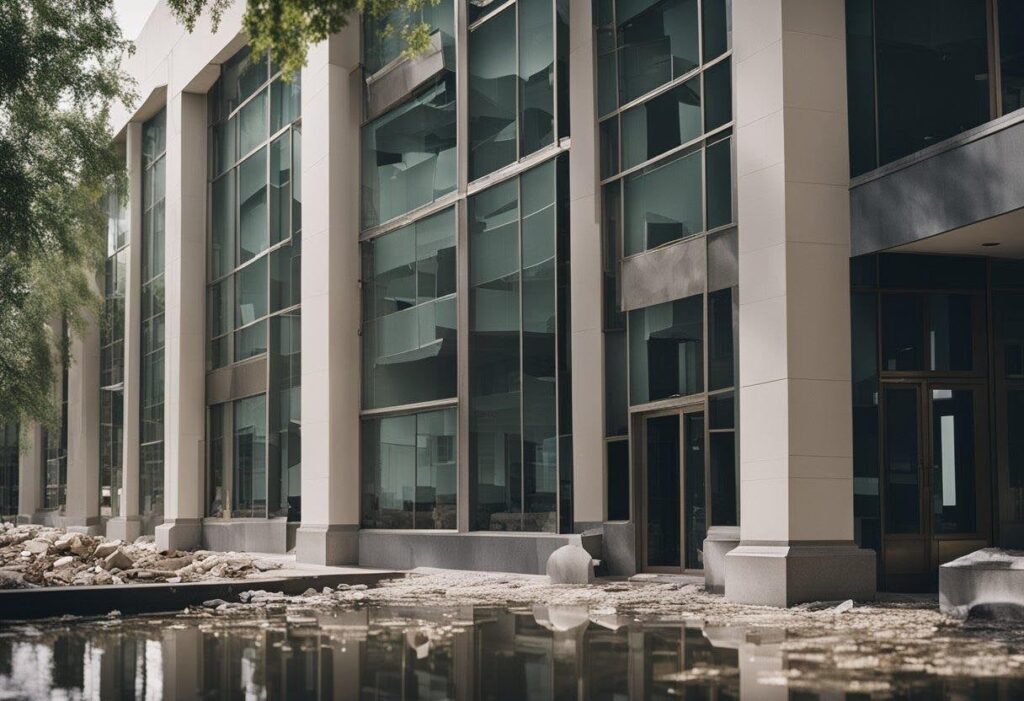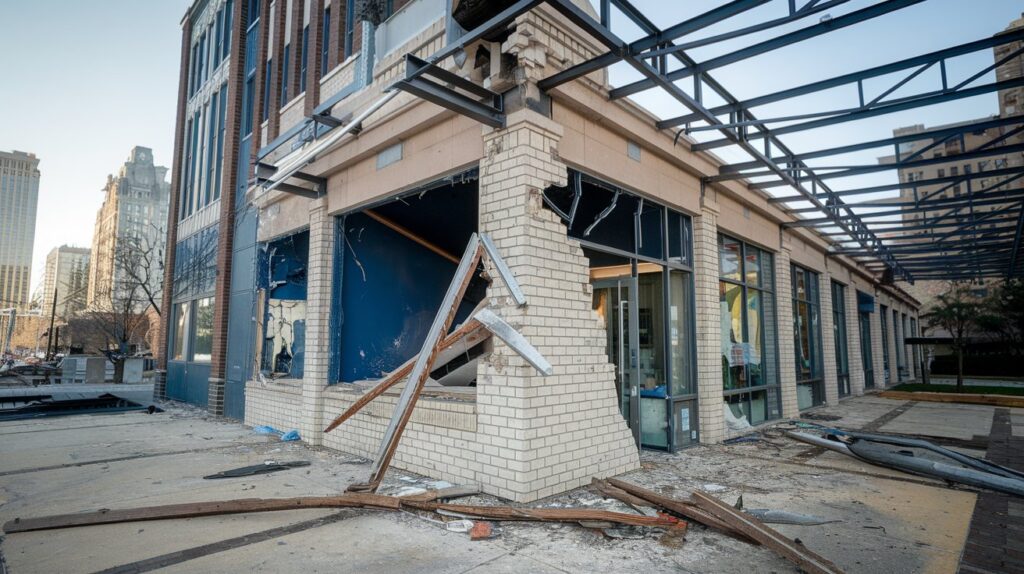Disputes over commercial property damage or negligence can pose significant challenges for business owners. When issues arise, understanding how to effectively resolve them can save time, money, and stress. Businesses often need to engage in negotiation, mediation, or litigation to address claims and pursue just compensation.
Stakeholders must know their rights and responsibilities when dealing with property damage. A thorough examination of contractual obligations, insurance policies, and relevant laws can provide clarity in these situations. Employing a strategic approach to dispute resolution facilitates smoother negotiations and can lead to more favorable outcomes for all parties involved. This can help anyone struggling with the consequences of property damage in Fort Lauderdale.
Understanding Commercial Property Damage

Commercial property damage encompasses a variety of incidents that can disrupt business operations and incur significant financial losses. Identifying the types of damage and determining the responsible parties is crucial for effective resolution.
Types of Commercial Property Damage
There are various categories of commercial property damage, including:
- Physical Damage: Resulting from natural disasters, accidents, or vandalism, this includes structural issues or damage to fixtures. Common examples include broken windows or compromised roofing.
- Environmental Damage: This can occur due to hazardous materials, oil spills, or water damage, affecting both the property and its surroundings. It may necessitate extensive remediation efforts.
- Theft and Burglary: Losing property through theft is a significant concern for businesses. This not only impacts physical assets but can also disrupt operations and lead to increased insurance costs.
In Fort Lauderdale, businesses often deal with tropical storms, highlighting the importance of understanding potential vulnerabilities. Adequate insurance coverage can mitigate financial losses, but knowing the specifics of the damage type is essential in pursuing claims.
Determining Responsibility for Damage
Establishing who is liable for property damage can involve several factors. Key considerations include:
- Insurance Policies: Reviewing the business’s insurance policy is the first step. Coverage limits and specific clauses can dictate responsibility and claims processing.
- Negligence: If a party’s failure to act caused the damage, they might be held accountable. This often relates to maintenance standards or building code compliance.
- Third-Party Claims: In cases where an external entity caused the damage, businesses may seek recovery from that third party. This often involves gathering evidence to support claims.
In Fort Lauderdale, local laws may also influence liability determinations. Engaging with legal experts familiar with local regulations can provide clarity on potentially complicated situations.
Legal Framework for Dispute Resolution
A defined legal framework is crucial for effectively addressing disputes related to commercial property damage or negligence. This section outlines key jurisdictional considerations and specific statutes and regulations that govern such disputes.
Jurisdictional Considerations
Jurisdiction determines which court has the authority to hear a case. In commercial property disputes, the location of the property plays a significant role in establishing jurisdiction. Key factors include:
- Geographical Location: The property’s location often dictates the relevant court.
- Subject Matter Jurisdiction: Courts must have authority over the type of dispute, such as negligence or breach of contract.
- Personal Jurisdiction: The court must have jurisdiction over the parties involved, which can depend on their residency or business presence in the area.
Statutes and Regulations
Several statutes and regulations govern commercial property disputes. Some important ones include:
- Uniform Commercial Code (UCC): Provides guidelines for contracts involving commercial properties.
- Landlord-Tenant Laws: These laws establish rights and responsibilities for parties involved in rental agreements.
- Negligence Statutes: Address liability issues when negligence contributes to property damage.
Compliance with these laws is vital for parties to navigate disputes effectively. Legal professionals should be aware of both federal and state regulations that may apply to the specific circumstances of a case.
Resolution Processes and Strategies
Disputes over commercial property damage or negligence can be resolved through various structured processes. Effective strategies focus on negotiation, mediation, litigation, and arbitration. Each process has advantages and considerations that are important for the involved parties.
Negotiation and Mediation
Negotiation is a direct discussion between parties aimed at reaching a mutual agreement. It allows for flexibility and often saves time and costs compared to formal processes. Each party presents their viewpoint and seeks common ground without third-party intervention.
Mediation involves a neutral third party who facilitates the discussion. The mediator helps identify issues and encourages collaboration. This process can lead to satisfactory solutions while preserving relationships. Successful mediation typically results in a binding agreement, although it is not enforceable until formalized.
Litigation and Arbitration
Litigation is a formal legal process where disputes are resolved in a courtroom. It involves filing a lawsuit and can be time-consuming and expensive. A judge or jury makes a final decision, which can be appealed by either party.
Arbitration serves as an alternative to litigation. It involves a neutral arbitrator who reviews the case and makes a legally binding decision. This process is generally quicker and less formal than court proceedings. Parties typically agree in advance to abide by the arbitrator’s ruling, which limits further dispute resolution options.
Preventative Practices and Liability Reduction
Implementing strong preventative practices can significantly minimize liability and reduce risks associated with commercial property damage. Effective strategies often include risk management techniques and appropriate insurance arrangements.
Risk Management Techniques
Organizations should prioritize several risk management techniques to protect their property.
- Regular Inspections: Schedule routine assessments of premises to identify potential hazards. Keeping pathways clear and ensuring proper lighting can prevent accidents.
- Employee Training: Implement comprehensive safety training for staff. Instructing employees on emergency procedures and equipment can reduce negligence claims.
- Maintenance Programs: Establish regular maintenance schedules for equipment and property. This includes checking HVAC systems, electrical installations, and plumbing to minimize incidents related to negligence.
By incorporating these practices, organizations can create a safer environment, protecting employees and the premises.
Insurance and Indemnification Agreements
Insurance plays a crucial role in managing financial risks associated with commercial property.
- Liability Insurance: Securing adequate liability insurance can cover legal costs arising from property damage claims.
- Indemnification Clauses: Incorporate indemnification agreements in contracts with tenants and contractors. This can protect the organization from financial loss caused by the negligence of third parties.
- Review Policies Regularly: Consistently assess insurance policies to adjust coverage limits and ensure they reflect current property values and risk exposure.
Using these insurance strategies can provide an essential safety net against claims, helping businesses mitigate potential financial harm from disputes.

